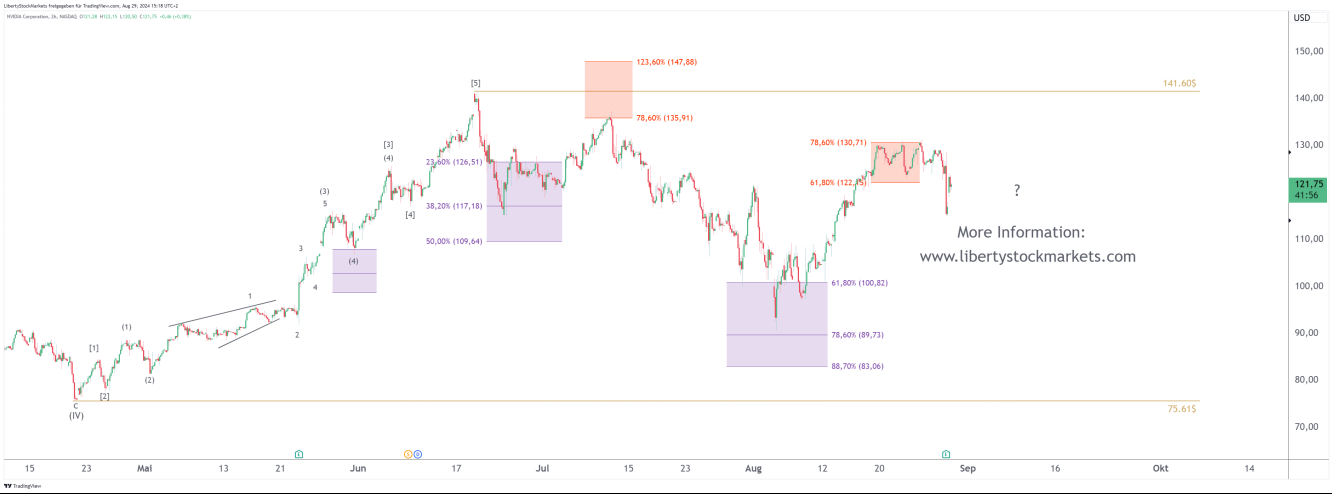Street Calls of the Week

Nvidia has become the new benchmark in the tech industry, with market observers seeing its quarterly results as a decisive factor for the industry as a whole. In the second quarter, the company was able to present impressive figures: revenue doubled year-on-year to $30 billion, while profits rose to $16.5 billion – more than two and a half times the previous year's figure. Even the former core business with graphics cards, now overshadowed by AI accelerators, saw double-digit growth.
Good numbers, falling prices – how does that fit together?
Despite this impressive performance, Nvidia's stock fell by as much as eight per cent in after-hours trading, representing a loss of almost $250 billion in market value. This raises the question: why are the markets reacting so negatively to such positive figures?
One reason could be investors' increasing scepticism as to whether Nvidia's extraordinary growth can continue to boost its share price or whether the potential is already priced in. Although Nvidia is optimistic about the future and expects revenues of $32.5 billion in the third quarter, there are concerns that expectations of AI and Nvidia's central role in it may be exaggerated.
Analysts such as Jim Covello of Goldman Sachs (NYSE:GS) warn that expectations of generative artificial intelligence are currently higher than the technology can deliver in practice. In addition, there are concerns about the high energy consumption of AI data centres, which could increase significantly in the coming years.
Nvidia provides outlook for further growth
Nvidia CEO Jensen Huang emphasised, however, that the company is at the beginning of a large-scale modernisation of data centres that need to be converted to AI accelerators. Despite this vision, many investors remain cautious, especially in view of the strong price fluctuations.
While demand for Nvidia's AI products remains strong and the company has even announced a $50 billion share buyback programme, uncertainty remains high. The question of whether Nvidia and generative AI have peaked or whether there is still room for further growth remains open. Investors are therefore choosing to be cautious in some cases to guard against possible setbacks.
And how do you deal with that now?
We see three groups that differ significantly. The first group is those who completely missed the incredible rise of Nvidia and are now panicking because they are unsure whether the stock is still worthwhile. The second group is those who jumped on the bandwagon very late and now see either a small plus or a small minus in their portfolio. This group is completely unsettled. The third group, to which we belong, recognised Nvidia's enormous potential very early on. This group is wondering when the best time will come to secure the big profit, or to stay invested or even to find an opportunity to buy more.

The purple and red boxes are clearly visible in the chart, and all of them were perfectly executed. All of our customers were always fully informed about the progress of the Nvidia share and were able to orient themselves on it. But what happens now?
We answer this question on our website. There you can register for free and test our analyses and trading signals for a full 14 days at no cost and without obligation. You shouldn't miss out on this. You can access the website via the link above this text next to my profile picture.
Disclaimer/Risk warning:
The information provided here is for informational purposes only and does not constitute a recommendation to buy or sell. It should not be understood as an explicit or implicit assurance of a particular price development of the financial instruments mentioned or as a call to action. The purchase of securities involves risks that may lead to the total loss of the capital invested. The information provided does not replace expert investment advice tailored to individual needs. No liability or guarantee is assumed, either explicitly or implicitly, for the timeliness, accuracy, appropriateness or completeness of the information provided, nor for any financial losses. These are expressly not financial analyses, but journalistic texts. Readers who make investment decisions or carry out transactions based on the information provided here do so entirely at their own risk. The authors may hold securities of the companies/securities/shares discussed at the time of publication and therefore a conflict of interest may exist.
